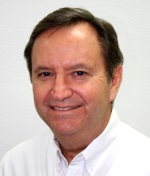I had a chance to trade emails just before his retirement to get the scoop on his long and fruitful career.
Q How long were you in the industry and for what companies did you work?
I started my career in the power electronics industry 49 years, 7 months ago, and that’s not including two years I spent in the Navy. I worked for many of the big names including Litton Data Systems-Van Nuys, CA (Military Electronics, purchased by Northrup Grumman), Commatics-Chatsworth, CA (Defunct telephonic start-up), Waugh Controls-Chatsworth, CA (Industrial Controls, purchased by Foxboro), Powertec-Chatsworth, CA (PSU company purchased by Emerson), Qualidyne/Lambda-San Diego, CA (PSU company that became TDK-Lambda), C-MAC Microtechnology (Crystal Oscillator manufacturer that was purchased by Rakon), Steren Electronics (Commercial/Consumer Electronics & Components), and TDK-Lambda Americas-San Diego, CA.

Q What positions did you hold?
I held many different positions including: Electronic Technician, Sr. Associate Engineer, Project Manager, Marketing Manager, Technical Applications & Regional Sales Manager, Product Marketing Manager, Program Manager, Product Development Analyst, and most recently, Product Marketing Manager/Technical Writer at TDK-Lambda Americas.
Q What are some of the significant changes you’ve seen in the electronics industry?
When I first started working for Litton Data Systems in early 1964, they were still employing vacuum tubes in the final stages of their radar display deflection amplifiers. In those days if you achieved an amplifier bandwidth of 20 MHz, you were superb. Memory devices consisted of hand-wired magnetic core memories, which were bulky and expensive and could store only small amounts of data compared to today's integrated RAM devices. Thereafter, a few basic integrated circuits (that is, OR & AND gates) started making their way into our hands and were eventually employed to replace discrete circuits. The first integrated “op amps” came from Fairchild and were used soon after their development. I remember one engineer experimenting with a small sample of a liquid crystal to see if it could be used for displays. I concluded, at that time, that the lifetime of the LCD was too short for practical displays. Times have certainly changed since then. In the realm of power supplies, I've witnessed substantial reductions in size, vastly improved efficiencies, and the application of internal and external digital interfaces and controls.
You can connect with Mel via his LinkedIn page http://tinyurl.com/l93tx37, or leave a comment at the end of this article.
Advertisement
Learn more about TDK-Lambda Americas





